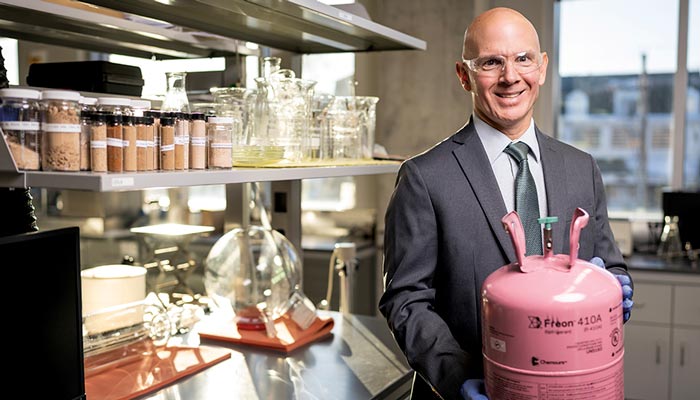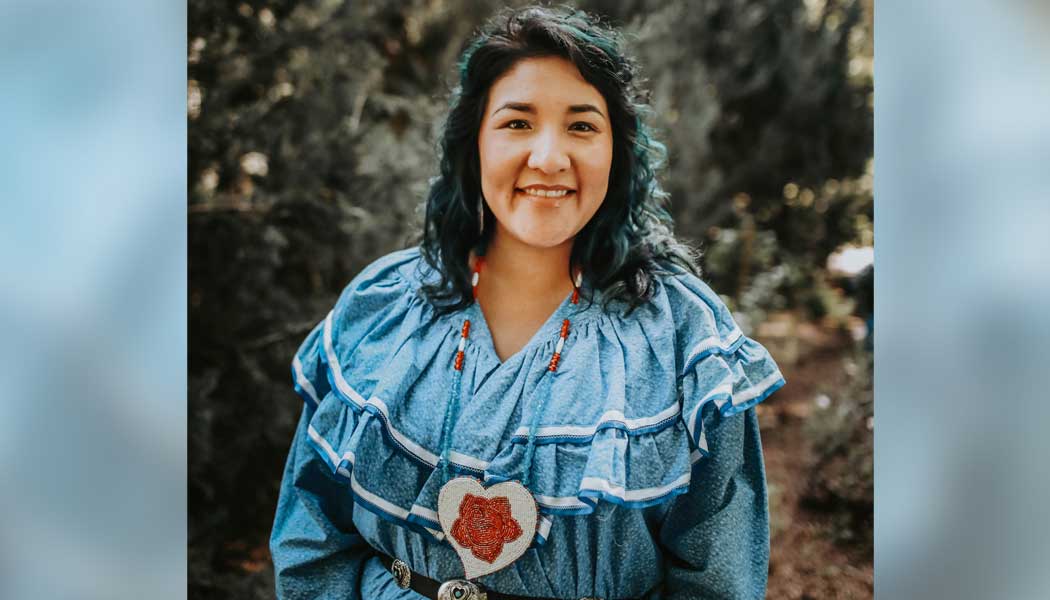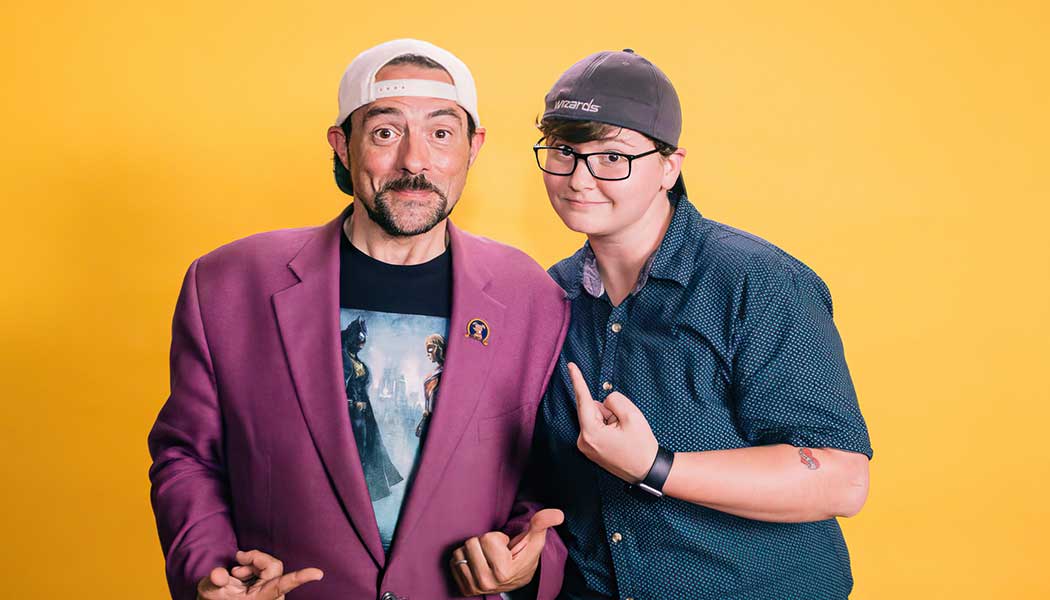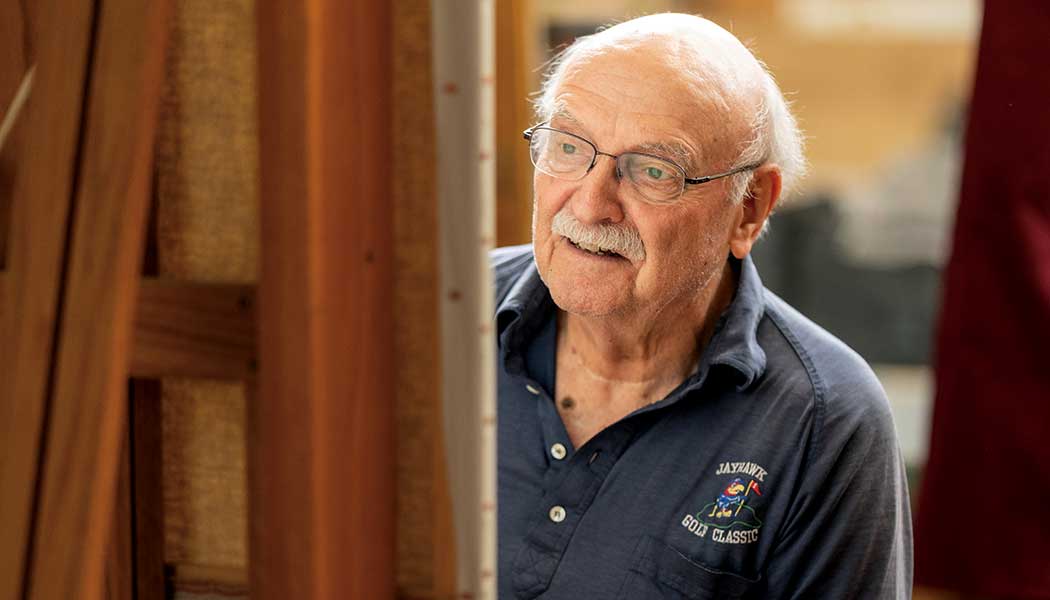KU alumna’s business revives beloved garments
Audrey Danser founded Salvage Studio SF to help keep clothes in working order—and out of landfills.
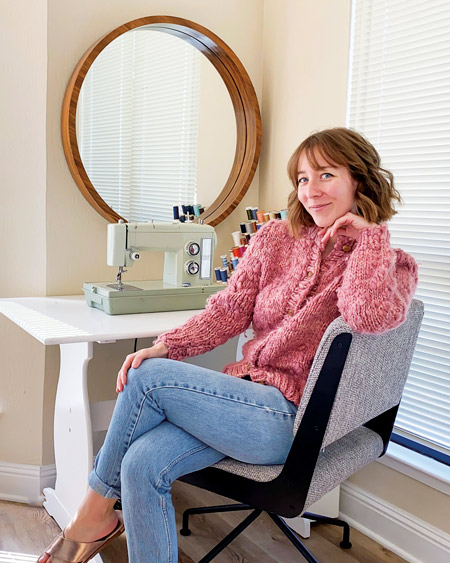
In repairing the ripped jeans and holey sweaters that arrive on her sewing table, Audrey Danser finds the perfect fusion of her interests in fashion, crafting and sustainability. The former architectural engineer also finds a common thread between her past and present professions.
“With mending, once you know the basics, it’s really about problem-solving more than skill,” says Danser, e’16, who owns Salvage Studio SF, a clothing repair business she launched in 2021. “This is where I go back to engineering: I have an existing parameter I am working in—a garment—and there is a problem. How do I think about fixing the problem, and how can I structure my repair so that it’s the most lasting, the most durable, the most invisible?”
From her studio in downtown San Francisco, Danser sews new life into damaged clothing for local clients and many throughout the U.S. who mail her their cherished items. Her garment glow-ups have included all types of denim, vintage designer pieces, elaborate beading, intricate lace and long-loved outdoor gear. In the modern era of fast fashion, Danser hopes to inspire a return to making clothes last.
“It was so common in the past to take your shoes to the cobbler or go to the local dry cleaner and get a rip fixed,” Danser says. “I’m trying to revive that repair culture—even just getting people to know that repair is an option. I think a lot of people just don’t consider it. I’m trying to fill that void.”
And the demand has proved strong. Danser repaired 574 garments in 2024, and through her hands-on workshops across the Bay Area, she has empowered hundreds of eager learners to tackle their own mending.
“It’s so rewarding to teach someone how to sew on a button—to sit next to them, and together we’ll fix the shirt that’s been sitting in the back of their closet because they couldn’t wear it,” Danser says. “It’s a reward to see the surprise in people: ‘Oh my gosh, I can do that myself! And it only took two minutes. Why haven’t I learned this sooner?’”
An Oklahoma native, Danser traces her propensity for extending items’ usability to growing up in a home where “everything was thrifted, and we did things like reuse Ziploc bags,” she says. “So I think I am innately a little more into reuse and repair.”
Browsing thrift store clothing racks nurtured her love of personal fashion as a creative outlet, as did learning how to operate her family’s sewing machine, which she’d use to repurpose her old dance costumes into skirts and scarves, teaching herself how to sew through trial, error and repetition.
In choosing a college, Danser looked for a particular academic program. “My original dream was to go into historic preservation, which makes sense, because it’s reusing buildings and renovating old things,” she says. “And the way to get there was through architectural engineering—learning about the structure of buildings and all the parts and pieces that go into it. I was looking specifically for architectural engineering programs, and that’s how I found KU.”
Through the Engineering Career Center in the School of Engineering, she landed a job as an electrical design engineer in San Francisco upon graduation in 2016. Two years later, she took a project manager position at a construction firm. In 2020, the global standstill set in motion Danser’s career leap.
“When the pandemic hit, construction halted. I was still employed, but had a little extra time on my hands, so I started an Instagram account called A Thrifted Wardrobe,” Danser says. “It was really just an opportunity to get dressed up for work again and showcase outfits and be creative. I challenged myself to wear every piece in my wardrobe, and in that process figured out there were things I needed to fix.”
Danser posted her repair work on Instagram and found an enthusiastic audience for both her services and skill sharing. She began Salvage Studio SF as a side project but has since made clothing repair her full-time job. “During the pandemic, I realized the things I loved most about my construction job were the social interactions,” she says. “With all of that removed, I was craving in-person connection and community.”
She hasn’t completely left the corporate world: Several Bay Area giants—Google, LinkedIn, SC Johnson—enlist Danser to offer workshops and even on-site mending as an employee benefit. She hopes to grow this side of Salvage Studio SF, “bringing mending to the people,” as part of her mission to do the most good for the environment.
According to the latest data from the U.S. Environmental Protection Agency, 9 million tons of clothing and footwear in the U.S. was sent to landfills in 2018. For Danser, the ripple effect of teaching more people how to repair their own clothes is her most effective means of reducing the amount of discarded clothing and, in turn, the associated environmental impacts. “Not everyone can adopt every sustainable action, but this is one that I think is really accessible,” she says of clothing repair.
And while the environmental angle is a focus for Danser, she has found that people can be motivated to repair rather than replace for a variety of reasons.
“I think the important part is, you have already purchased it and made an investment in that piece of clothing. Make it last as long as you can,” Danser says. “If you keep buying a cheaper version and replacing it over and over, you’re actually spending quite a bit of money.
“Sometimes the repair does cost more than buying something new, so you have to think about other motivators: Is this a more sustainable action? Is this a sentimental piece? I think for a lot of my clients, what motivates them is that they can’t find a replacement—it’s something like a pair of jeans that isn’t made in that style or quality anymore. So there are other motivators outside of the financial aspect that can help tip the scale toward repair.”
Among her most memorable restorations: a tattered Olympics warm-up jacket from the 1950s that the athlete’s grandson wanted repaired so it could be framed and displayed.
“Hearing those stories about people’s pieces and why they want to fix them and keep them in rotation—that’s powerful for me,” Danser says. “It’s what keeps me going in my business.”
Connect with Salvage Studio SF.
Megan Hirt, c’08, j’08, is associate digital editor for Kansas Alumni magazine.
/
